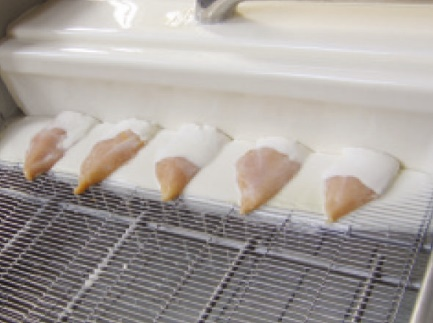Understanding the Mechanics of a Battering Machine

A Battering Machine is an integral part of the food processing industry, particularly in the production of breaded and battered products. This article aims to provide an understanding of the mechanics of a Battering Machine and how it contributes to efficient and quality food production.
What is a Battering Machine?
A Battering Machine is a type of food processing equipment used to apply a layer of batter on food products. It is commonly used in the preparation of breaded and battered products like fried chicken, fish fillets, and vegetables.
How does a Battering Machine work?
The mechanics of a Battering Machine can be broken down into a few key steps:
1. Feeding: The food products are placed on a conveyor belt that transports them into the machine.
2. Application: As the food products pass through the machine, they are submerged in a tank filled with batter. The machine ensures a uniform and consistent application of batter on all sides of the product.
3. Removal of Excess Batter: After the application, the food products pass through an air knife or blower. This removes any excess batter, ensuring a consistent layer of batter on each product.
4. Transfer: The battered products are then transferred to the next stage of the production process, which could be breading, frying, or freezing.
Why is a Battering Machine important?
A Battering Machine offers several advantages in food production:
1. Efficiency: It automates the battering process, significantly increasing production speed and efficiency.
2. Consistency: It ensures a uniform application of batter, resulting in consistent product quality.
3. Cost-Effective: By controlling the amount of batter used, it reduces wastage and saves costs.
4. Safety: The automated process reduces direct contact between workers and food products, enhancing food safety.
Understanding the mechanics of a Battering Machine is crucial for optimizing its use in food production. By leveraging its efficiency, consistency, and safety features, food manufacturers can produce high-quality battered products at a lower cost. This not only benefits the manufacturers but also the consumers who enjoy these delicious products.
What is a Battering Machine?
A Battering Machine is a type of food processing equipment used to apply a layer of batter on food products. It is commonly used in the preparation of breaded and battered products like fried chicken, fish fillets, and vegetables.
How does a Battering Machine work?
The mechanics of a Battering Machine can be broken down into a few key steps:
1. Feeding: The food products are placed on a conveyor belt that transports them into the machine.
2. Application: As the food products pass through the machine, they are submerged in a tank filled with batter. The machine ensures a uniform and consistent application of batter on all sides of the product.
3. Removal of Excess Batter: After the application, the food products pass through an air knife or blower. This removes any excess batter, ensuring a consistent layer of batter on each product.
4. Transfer: The battered products are then transferred to the next stage of the production process, which could be breading, frying, or freezing.
Why is a Battering Machine important?
A Battering Machine offers several advantages in food production:
1. Efficiency: It automates the battering process, significantly increasing production speed and efficiency.
2. Consistency: It ensures a uniform application of batter, resulting in consistent product quality.
3. Cost-Effective: By controlling the amount of batter used, it reduces wastage and saves costs.
4. Safety: The automated process reduces direct contact between workers and food products, enhancing food safety.
Understanding the mechanics of a Battering Machine is crucial for optimizing its use in food production. By leveraging its efficiency, consistency, and safety features, food manufacturers can produce high-quality battered products at a lower cost. This not only benefits the manufacturers but also the consumers who enjoy these delicious products.